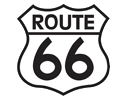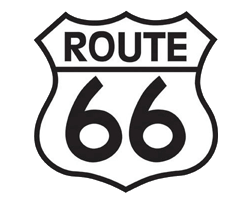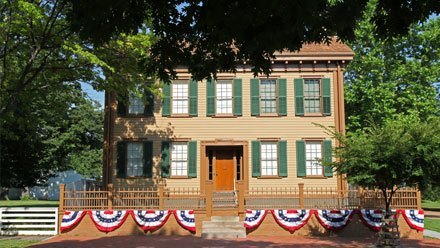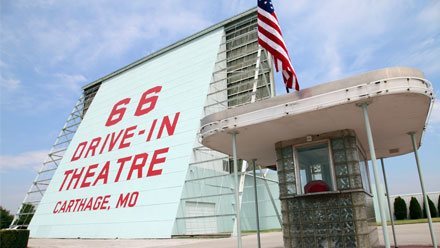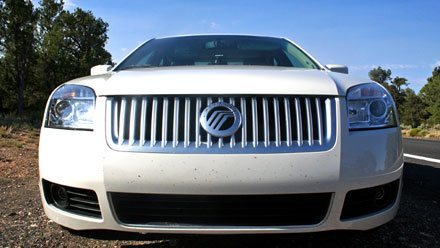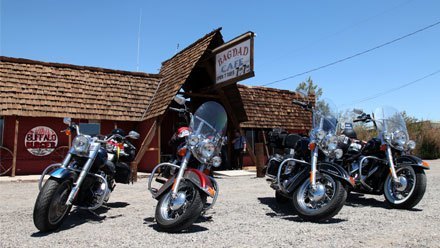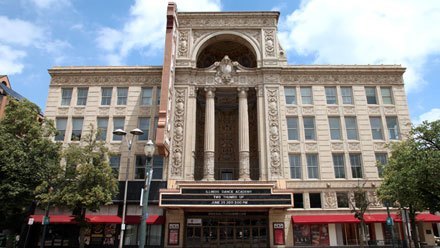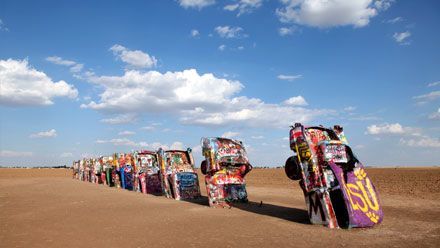Route 66 motels and historic hotels

Motels: this is one of the best deals on "Route 66". Even if many had to close shop after decommissioning, others continue to welcome visitors in an atmosphere of times past. Some of them are quite legendary.
Motel, a word standing for "motor" and "hotel" combined, appears along Route 66 in Miami, Oklahoma, as the "Riviera Courts", the first motorist hotel, opened its doors. It will be quickly emulated along the transcontinental route for which it was designed, fully committed to the automobile.
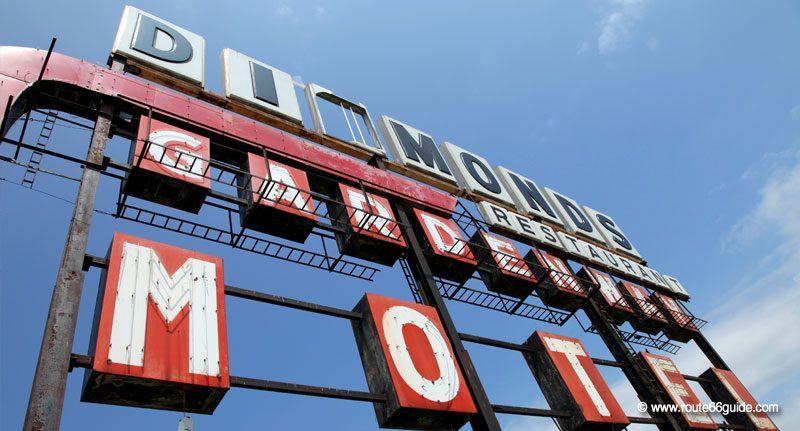
Motels were designed from the ground-up to minimize walking distances; usually located next to the busiest areas, guests park directly across the reception to book the night and then drive over to the parking space in front of their rooms. Thus, motels will rarely have more than one floor, usually featuring a U-shape setup, around long rows of parking spaces.
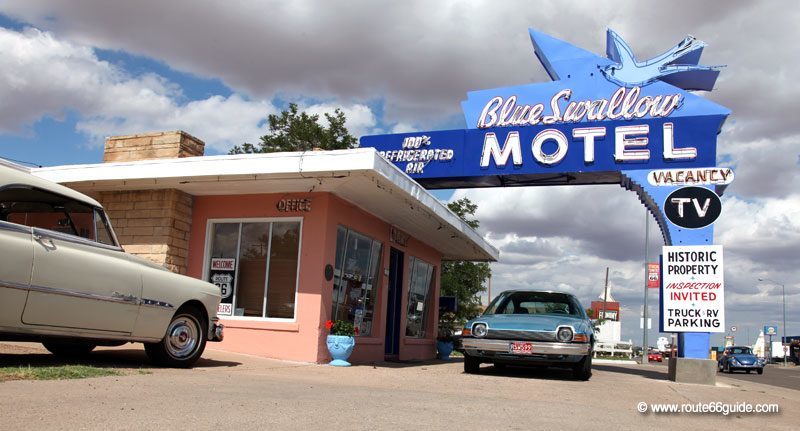
In the heyday of Route 66, some motels diversified to become tourist courts, which offered a multitude of ancillary services, restaurant, bar, garage, service station, etc.

But ... beware! Some travelers have endured bad experiences at some “weary” motels, fighting against dust, moisture, barely functioning equipment and ... fending off feisty cockroaches! It seems clear that many historical establishments, perhaps under the pretext of maintaining a vintage atmosphere, are avoiding a much needed renovation.
We also came across ravishing surprises. In particular, we have soft spot for the marvelous "Wagon Wheel Motel" in Cuba, Missouri, an all-time icon of Route 66. It was recently purchased and entirely renovated by a resident of the small "Murals" town, staying true to the history of this former tourist court, which represented an unavoidable stage for Route 66 travelers. Travelers are naturally drawn by its beautiful neon sign, flashing along the historic route throughout the night.
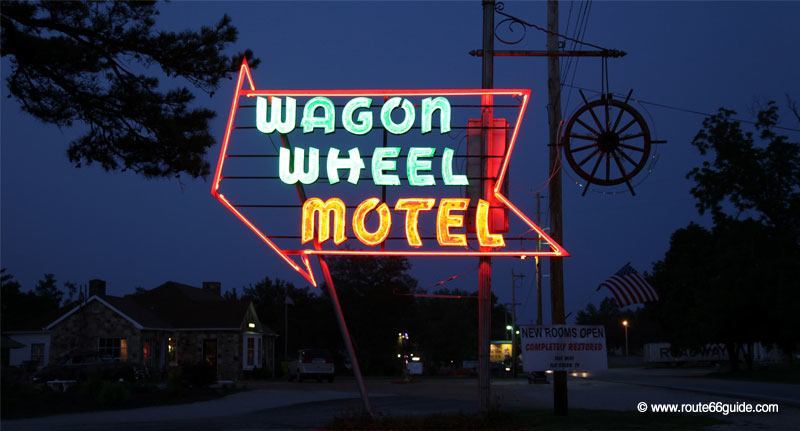
Its rooms, housed in small cabins sprawling out onto a large garden area, are beautifully decorated and equipped with modern amenities. $60 for a double room, $100 for a suite with Jacuzzi or massage shower.
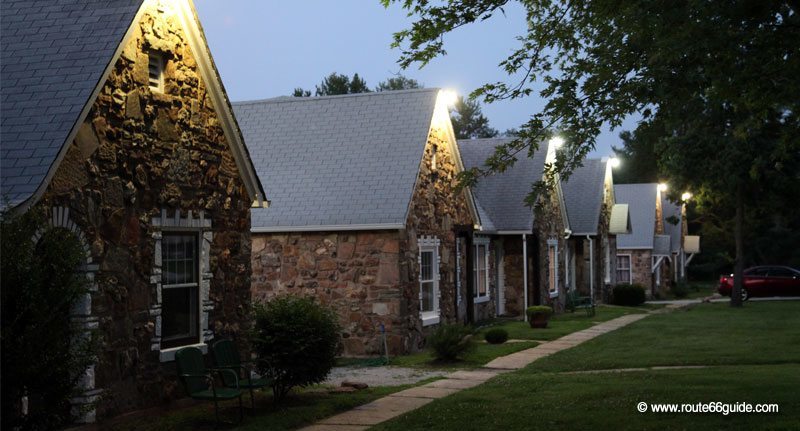
During the wild years of Route 66, the "WigWam" motel chain raised many eyebrows and rightly so. At the time, the chain run ten establishments distributed along the transcontinental route, and offered rooms housed in hard-fabric teepees, around a mischievous and provocative slogan: "Do it in a teepee”. Again, everything was arranged so guests park across their rooms. Sadly enough, few of them have survived the disappearance of Route 66. The last two teepee-motels are still in service in Arizona (Holbrook) and California (Rialto).
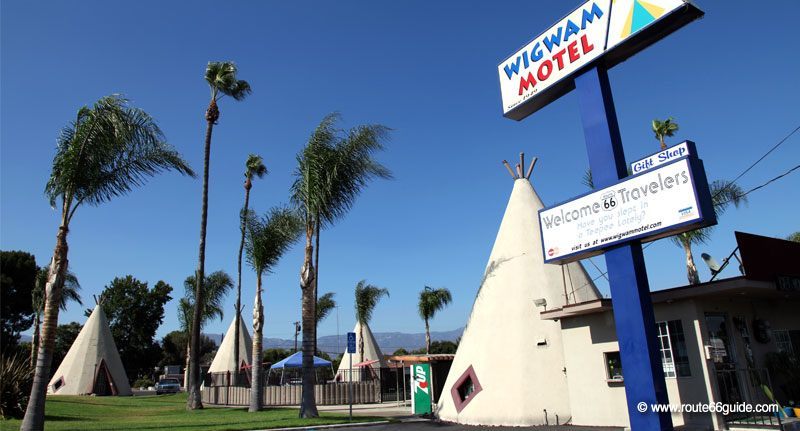
Also mythical are the many hotels and motels that hosted some of the greatest personalities of those crazy days. Several motels and hotels on Route 66 claim to have hosted Elvis Presley. Such is the case of the Best Western Route 66 Rail Haven in Springfield, Missouri. Entered in the National Register of Historic Buildings, the establishment offers light wood "cottage-cabins", in an U-shape setup as customary, and proclaims in a giant billboard along the road: "Elvis Presley stayed here"; it was in 1956.
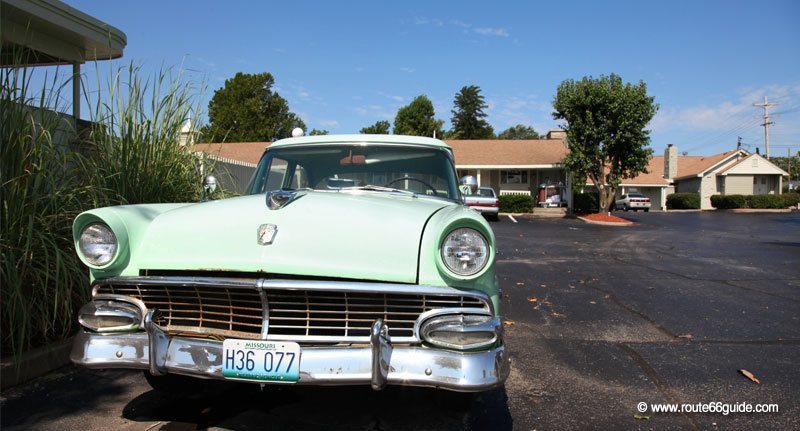
It may not look like much and yet ... the King was apparently a regular at the Trade Winds Motel in Clinton, Oklahoma, where he repeatedly stayed in room 215, one you can still book today.
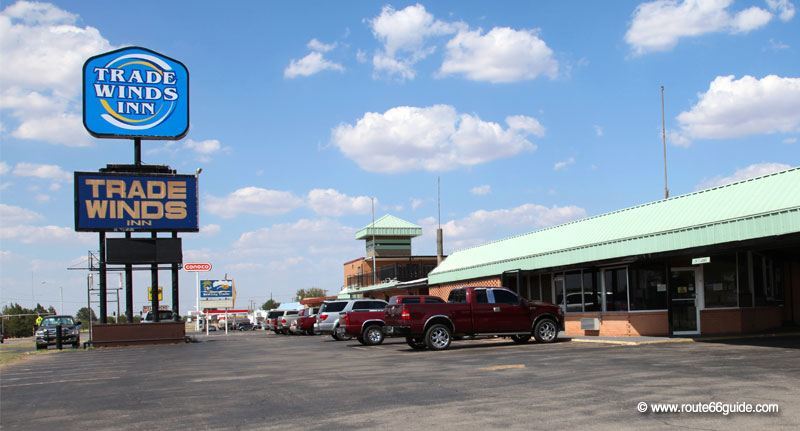
In the footsteps of other celebrities from the golden age of the cinema, we head towards "El Rancho" hotel in Gallup, New Mexico, once a sort of Hollywood studios branch. The autographed portraits of the greatest actors and actresses ornate the walls of the magnificent hotel lobby, basking in a serene, warm atmosphere framed by dark wood and wide, protruding beams.
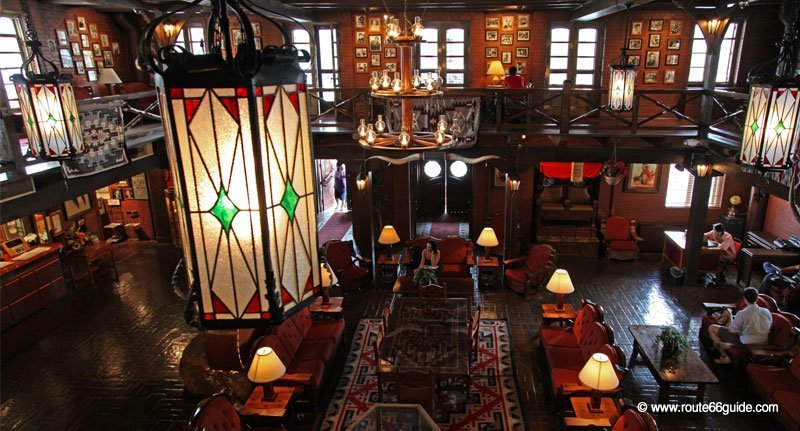
Other establishments are even older. The best example is "La Fonda Hotel" in the delightful town of Santa Fe, perched at an altitude of 7,260 ft amid the high mountains of New Mexico. The city is the oldest city in the west and "La Fonda", probably the oldest hotel in the United States.
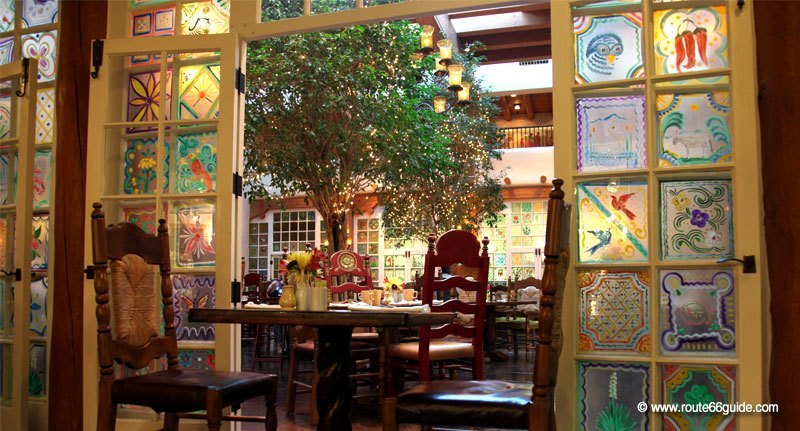
Motels are distributed all along Route 66 directly on the edge of the road. Not surprisingly, they are more numerous in the most populous regions of the country. As in their heyday, the oldest among them are still announced by the neon light of oversized, vintage-style neon billboards. However, as you make your way on Route 66, certain wariness sinks in: many billboards, even those of dazzling shininess restored by Route associations, announce long gone establishments...
